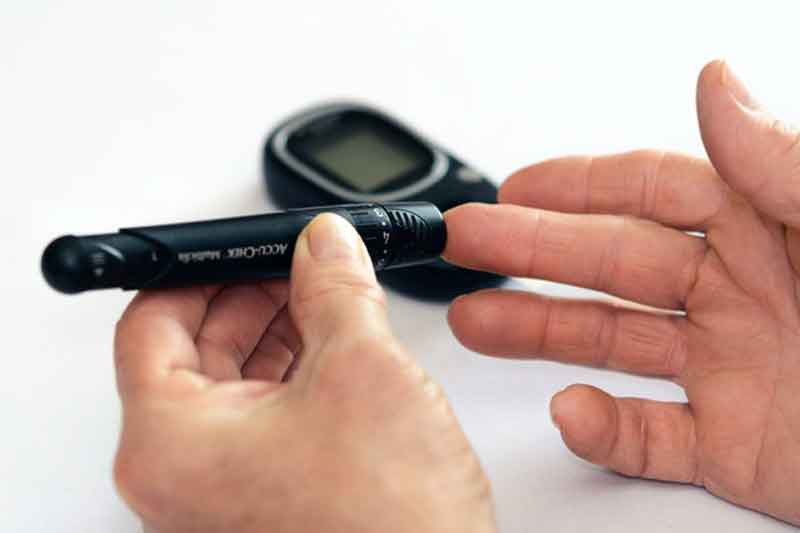I know that it seems weird to have socks and shoes specifically for diabetes but they are very necessary. Some socks can help solve the very thing that many diabetics need their toes and feet amputated for. They can lessen in-shoe plantar pressure that has become a high-risk to diabetic patients. It has been said that high plantar pressure is a huge risk in the production of plantar ulcers in a diabetic neuropathic foot.
Shoes And Socks For Diabetics: I know that it seems weird to have socks and shoes specifically for diabetes but they are very necessary. Some socks can help solve the very thing that many diabetics need their toes and feet amputated for. They can lessen in-shoe plantar pressure that has become a high-risk to diabetic patients. It has been said that high plantar pressure is a huge risk in the production of plantar ulcers in a diabetic neuropathic foot.
An examination was done providing the fact that diabetic socks reduced plantar foot pressures in a group of 19 diabetics who had Peripheral Neuropathy. Fifteen of those patients were male of at least 65 years old and showed no ulcers at the time of the study.
These socks consist of a double layer material that show a padded outer layer which cushions the feet and a low-friction fiber inner layer that help to reduce friction at the sock top layer. When in comparison with regular socks there is a major difference, normal Wal-mart socks have a maximum foot contact of 0.7 millimeters while special designed diabetic socks have 2.3 millimeters around the toe area.
Diabetes affect nearly 20 million people in the United States and nearly half those people do not even realize that they have it. It is chronic disease that can cause long-term damages all over your body such as your eyes, heart, lungs, kidneys, feet, blood vessels and nerves. Over 15% of diabetic patients will develop some sort of skin ulcer on their feet which will cause pain and unnecessary agony to their daily life. Sad to say that over 20% of those people who have an ulcer will need to have their foot or toe amputated.
Sometimes a person with diabetes will find that their foot will swell more than twice the normal size of their foot. They will also experience some loss of nerve sensation which is called neuropathy. There are some ways that you can help take care of your feet when having diabetes. You need to first make sure that you are putting your feet into comfortable fitting shoes and socks. Making sure that you have proper fitting shoes and socks will stop the onset of both irritation and infections. You will also need to see a podiatrist who specializes in the care of feet. They can let you know of your condition of what can be done to ensure healthier feet.
When you look at your feet for ulcers which you should do daily when being a diabetic you will need to look for these signs to make sure you are not developing an ulcer on the foot.
Look for these conditions:
Color changes in your skin, swelling of the foot or ankle, open soars of any kind on the foot, elevation of the skin temperature, corns or calluses that show bleeding within the skin, cracks in the skin around the heel, ingrown and fungus infected toes.
Some samples of diabetic socks can be found all over the internet, on of them is called a DiaSox and generally costs about $13 for one pair. Even though they are fairly more expensive then regular socks I would have to say it would be worth the extra money to not loose your foot. This sock is made of 88% breathable cool-cotton yarn. It is helpful to those who have their feet or leg swollen up. It has a knit top that stay up so that there is no binding or marks left that can cause ulcers. Flat toe stitching for maximum comfort and can be worn by both genders. You can find them in size small through sixe XX and you can also find some with a large calf for the larger calf people. You can find them in both black and white.
Another sock you can find online is called the Therapeutic/comfort seam-free sock which generally costs up to $40. This sock is loved and offered by Podiatrists all over the world, they are seamless and designed to ensure a smooth fit that does not lie across pressure points. They are made from thin, strong yarn so that there is plenty of room in your shoe that won’t make the sock bunch up. The sock was designed to follow the shape of your foot from your toes to the tops of your leg.
There are certain things you can do help with your diabetes so that way it may never even affect your feet. You much always follow the diet plan that you have worked out with your doctor. You should stay active at least 30 minutes on most days, you can ask your doctor to provide activities that might be good for you. Always take the medication that is described to you. You’ll need to be sure to check your blood glucose every day. Check your feet for blisters, cuts, sores, redness, swelling or sore toenails. Floss and Brush your teeth daily. Don’t smoke, that is harmful in itself. Also control your blood sugar and cholesterol.
The two things from diabetes that can hurt your feet is nerve damage and poor circulation. Nerve damage is caused by the damage that happens in the nerves of your legs and feet, sometimes a cut on your foot or leg will worsen because you can’t even feel that is there. Poor circulation happens when not enough blood flow is getting to your feet and legs. Be sure to do the following things to try and prevent any foot problems while having diabetes.
Feel the inside of your shoes before putting them on to make sure there are no sharp edges sticking out. Wash your feet daily with warm water, but be sure the water is not to hot and never soak your feet and always dry them. Pay attention to your feet, when you are diabetic, this can be the number one way to say your feet. If you see any scraps, cuts, sores or blisters you need to start medical attention right away because it could eventually cause amputation. Sometimes your skin will feel over dry, you can try and rub lotion on your heels and the palm of your foot, but never put the lotion in between your toes. After taking a bath you can try using a pumice stone or file to get rid of those annoying corns and calluses. You should wear socks continuously even while you sleep to avoid blisters and sores. Always wear shoes that fit your feet well, never wear shoes that are smaller or larger then your feet because that can cause damage to your feet and toes. Cut your toenails once a week so they don’t have to chance to scratch you other toes or other foot.
These things do not insure a safe way to keep your feet from ever getting sores or blisters but they do help in trying to keep them safe. Once you have a blister you need to take very care of it and watch it to make sure it does not get any worse if it does get worse immediately see your doctor. Having diabetes is very hard and developing Neuropathy can make it that much harder, so take care of yourself and your feet.

 Alcohol And Diabetes: You’ve just been diagnosed with Diabetes; some might feel frightened because of the obvious. Others might feel a tad insecure because they think perhaps the fun part of their life is over and now they much watch everything they put into their systems like a hawk. Nothing can be harder then living your life free as bird one second and then feeling as though you are not able to perform the same tasks you have for several years. You think perhaps that you will always have a choice to say what is put into your body and the you wake up to realize that the very next thing you put in you could end up killing you.
Alcohol And Diabetes: You’ve just been diagnosed with Diabetes; some might feel frightened because of the obvious. Others might feel a tad insecure because they think perhaps the fun part of their life is over and now they much watch everything they put into their systems like a hawk. Nothing can be harder then living your life free as bird one second and then feeling as though you are not able to perform the same tasks you have for several years. You think perhaps that you will always have a choice to say what is put into your body and the you wake up to realize that the very next thing you put in you could end up killing you.
 The American Diabetes Association has one mission and that is to prevent and cure diabetes. While they work on that, they also are working on improving the lives of everyone who is affected by diabetes.
The American Diabetes Association has one mission and that is to prevent and cure diabetes. While they work on that, they also are working on improving the lives of everyone who is affected by diabetes. Juvenile Diabetes Research Foundation: There is nothing harder in the world than watching our children suffer. Can you imagine if your child suffered from diabetes, specifically type 1 diabetes? Type 1 diabetes is often referred to as juvenile diabetes because it is usually diagnosed by the time your child is fourteen. The Juvenile Diabetes Research Foundation is the place for you to go to. It was founded by parents of children who have been diagnosed with diabetes and want to make a difference in this world.
Juvenile Diabetes Research Foundation: There is nothing harder in the world than watching our children suffer. Can you imagine if your child suffered from diabetes, specifically type 1 diabetes? Type 1 diabetes is often referred to as juvenile diabetes because it is usually diagnosed by the time your child is fourteen. The Juvenile Diabetes Research Foundation is the place for you to go to. It was founded by parents of children who have been diagnosed with diabetes and want to make a difference in this world. Diabetics Looking At LASIK Surgery: Just because you have diabetes, it does not automatically mean you are not qualified to have LASIK surgery. Chances are you can but there are some things you need to consider before hand.
Diabetics Looking At LASIK Surgery: Just because you have diabetes, it does not automatically mean you are not qualified to have LASIK surgery. Chances are you can but there are some things you need to consider before hand. Understanding Your Pancreas: Some people don’t give their pancreas a second thought. The pancreas is a complicated organ. Not only does it produce digestive enzymes which break down the food you eat it also produces the hormones
Understanding Your Pancreas: Some people don’t give their pancreas a second thought. The pancreas is a complicated organ. Not only does it produce digestive enzymes which break down the food you eat it also produces the hormones